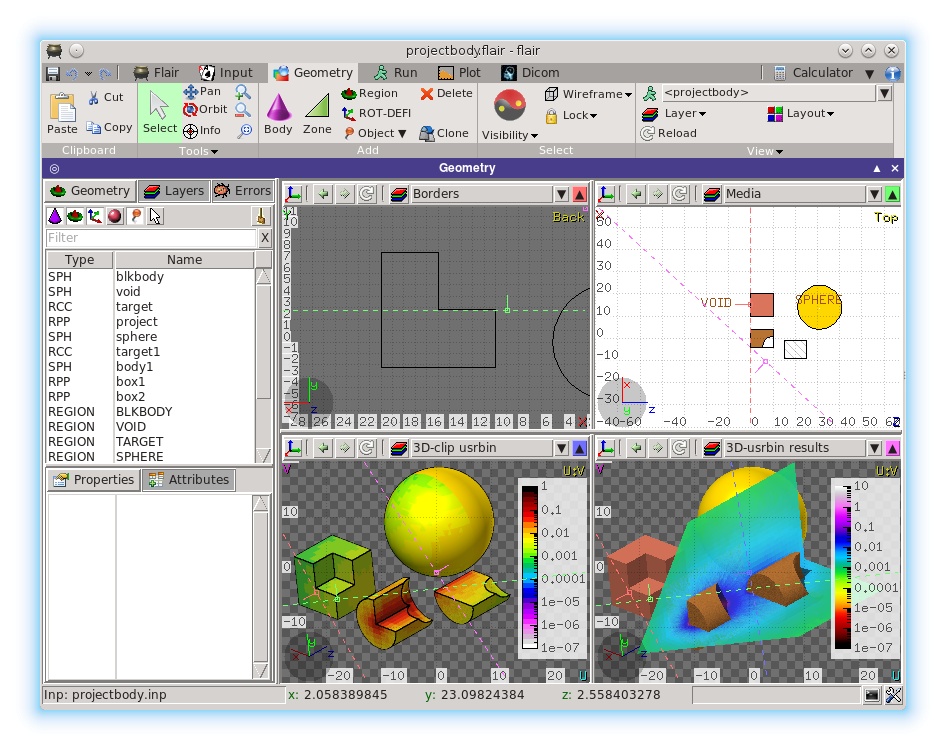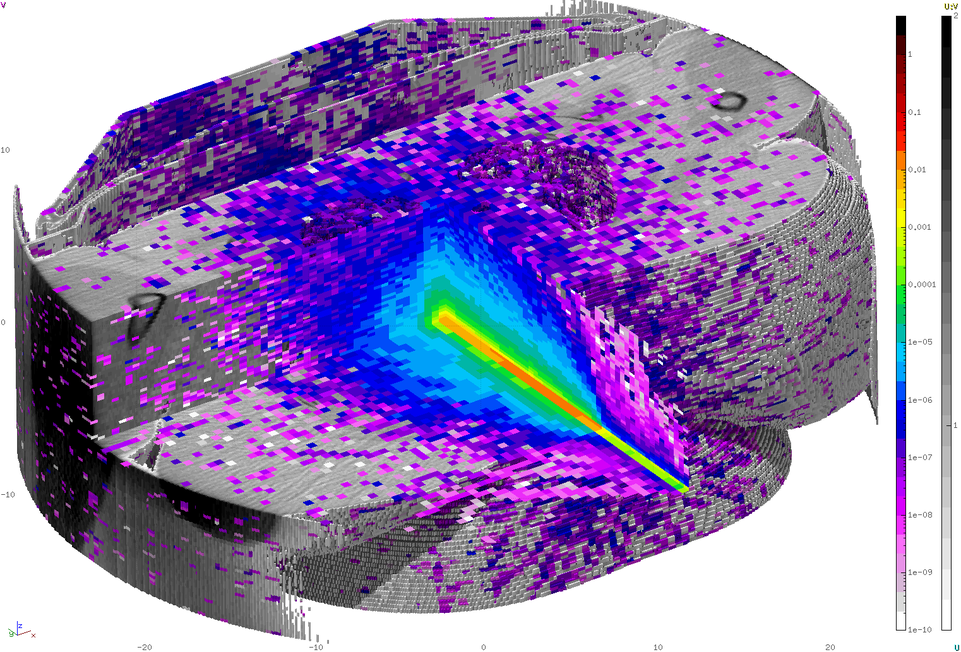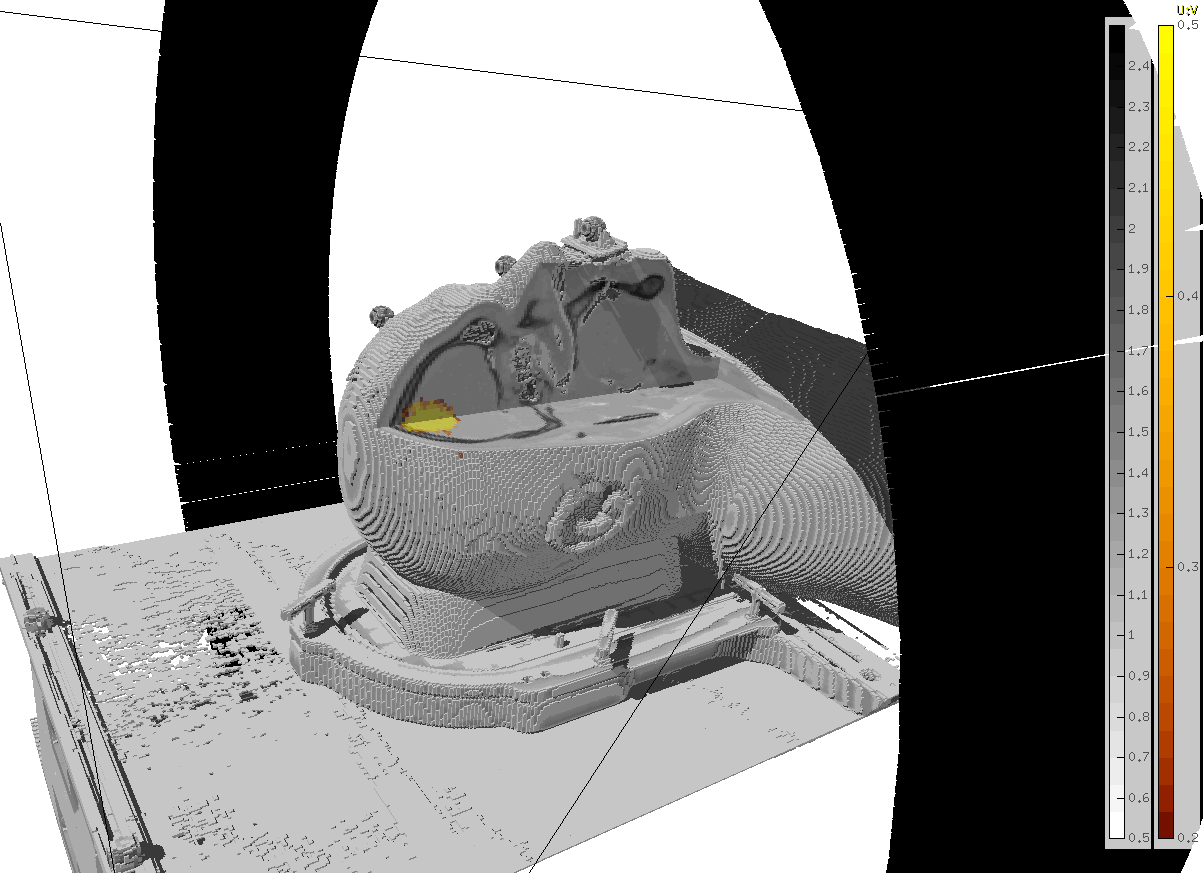Flair is an advanced user-friendly interface for FLUKA to facilitate the editing of FLUKA input files, execution of the code and visualization of the output files. It is based entirely on python and Tkinter.
Flair can be downloaded from the Flair website cern.ch/flair, where also a more detailed documentation and tutorials are available.
 |
 |
 |
|
Features:
- input editor front-end interface for easy and almost error-free editing as well as validation of the input file during editing;
- interactive geometry editor, allowing to edit bodies and regions in a visual/graphical way with immediate debugging information;
- advanced layer mechanism for graphically displaying any information from the input file on top of the geometry:
- lattices and voxel display 2D and 3D
- density, biasing, thresholds, ...
- technical drawing superposition
- interactive USRBIN plotting and surface mapping
- realtime 3D ray-tracing rendering, with shadows, edges, clipping and projection bodies
- customizable multiple palettes
- debugging, compiling, running and monitoring of the status during a run;
- back-end interface for post-processing of the output files and plot generation through an interface with gnuplot and 3D photo-realistic images;
- materials library and geometrical objects, for easier editing, storing and sharing among other users and projects;
- python API for manipulating the input files, post-processing of the results and interfacing to gnuplot;
- import/export to various formats:
- MCNP
- GDML
- Povray
- DXF
- bitmap images
The philosophy of flair interface was to work on an intermediate level. Not too high, that hides the inner functionality of FLUKA from the user, and not so low that the user is in constant need of the FLUKA manual to verify the options for each card. Flair works directly with the input file of FLUKA and is able to read/write all acceptable FLUKA input formats. In the input editor the user is working directly with the FLUKA cards using a small dialog for each card. The program displays the card information in an interpreted human-readable way. The only exception is that the cards in flair are so-called extended cards where each card is not composed only by 6 WHATs and 1 SDUM but rather they contain all related information in one unit (comments preceding the card, continuation cards, titles, etc).

